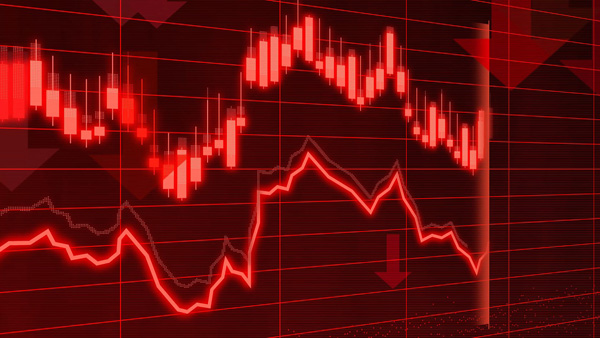Tariffs and recession fear rise as the stock falls again

[Stock market chart dropping. Photo Credit to Pixabay]
On March 10, 2025, the stock market experienced another major decline as investors grew more worried about rising tariffs and the possibility of an economic contraction in the U.S. economy.
The Dow Jones Industrial Average fell by close to 900 points (2.3%), and other indexes like the S&P 500 and Nasdaq dropped even more steeply.
This decrease is partly caused by new tariffs between the United States and trading partners, like China.
The tariffs make it more expensive to buy items, which can slow down trade.
Companies that depend on imports are facing increasingly higher costs, putting pressure on their profit margins and future outlook.
Economic concerns have intensified as consumers worry that the country could be going into a recession.
A recession is when the economy shrinks, people lose jobs, and it becomes harder to borrow or spend money.
Economists have pointed to signs like “yield curve inversion,” which has predicted past recessions.
This is when long-term interest rates fall below short-term ones, which indicates investors are worried about the future.
The government and the Federal Reserve might need to take action, like interest rate cuts or adjustments to monetary policy, to help the economy and stop it from slowing down too much.
While stock markets go up and down, this drop demonstrates that investors are worried.
Many people are waiting to see what happens with trade talks and if the U.S. government can find a way to address these challenges.
Market volatility reveals that even when the economy seems to be doing well, things can change quickly.
Leaders and businesses will need to pay attention, make smart decisions, and focus on finding solutions to maintain the economy and protect jobs.
The Federal Reserve controls interest rates, and they may lower them to make it easier for businesses to borrow money.
This could help businesses grow and encourage citizens to spend money, which would boost the economy.
However, lowering interest rates too much could cause prices to rise, making things more expensive for everyone.
Escalating trade problems with countries like China are making the economy even more unstable.
Tariffs, or taxes on goods from other countries, can make consumer goods increase in cost and slow down spending.
Businesses that rely on products from other countries might face delays and higher costs because of these tariffs.
Even though these changes may seem far away, they can still affect regular citizens.
If the economy gets worse and an economic contraction occurs, more jobs could be lost, and products could become more expensive.
Recent data shows troubling trends in the labor market.
The unemployment rate increased to 4.2 percent in March, and the number of unemployed persons rose to 6.9 million.
This uptick in unemployment represents a reversal from the strong job market of previous months and could be an early warning sign of economic trouble.
When companies face uncertainty, they often pause hiring or begin layoffs, affecting household incomes and consumer spending power.
Expectations remain high for the government to find a way to grow the economy while also protecting jobs.
As the situation continues, analysts, investors, and citizens are carefully monitoring to see if the government can bring stability back to the economy.

- Jayden Lee / Grade 7 Session 8
- Canyon Hills Junior High

![THE HERALD STUDENT REPORTERS [US]](/assets/images/logo_student_us.png)
![THE HERALD STUDENT REPORTERS [Canada]](/assets/images/logo_student_ca.png)
